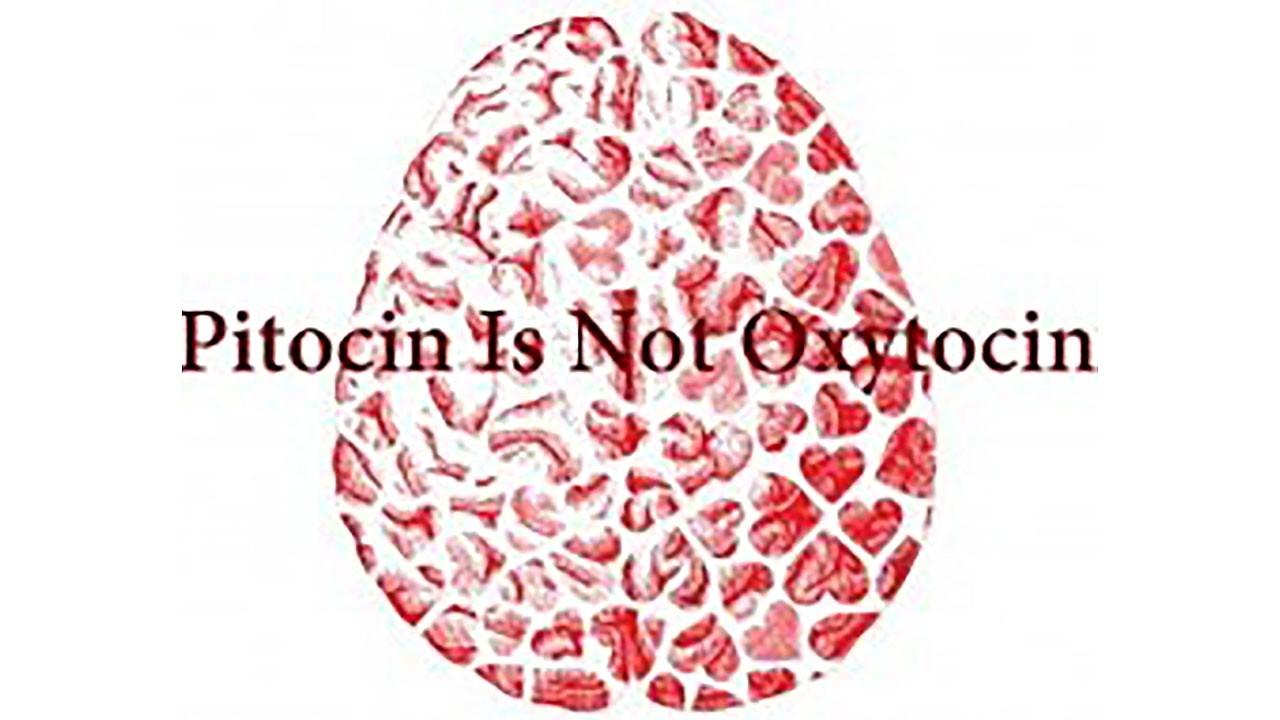Pitocin Is Not Oxytocin

What is Oxytocin?
“The Love Hormone”. Sounds important, no? Turns out that we know very little about the hormone oxytocin, beyond that it is incredibly relevant to multiple metabolic, behavioral, and endocrine functions. In a compelling review entitled Beyond Labor: The Role of Natural and Synthetic Oxytocin in the Transition to Motherhood, the study’s authors (Bell et al) explore the literature suggesting that, once again, we cannot outsmart, outdo, or circumvent nature with pharmaceutical products.
The Love Hormone
One of the known roles of oxytocin is in the complex physiology of labor and birth. Perceived by the obstetrical establishment to be a “contraction chemical”, oxytocin’s effects are bodywide, and most notably, brain-based. During pregnancy, oxytocin receptors increase in areas of the maternal brain related to mood, stress, and attachment behavior. Specifically, its activity has been studied in the hypothalamus, lateral septal nucleus, periaqueductal grey, Broca’s area, nucleus basalis of Meynert, locus coeruleus, vagus, solitary tract, trigeminal nerve, and lateral reticular formation. It is secreted continuously in the brain and in a pulsatile manner to the body through the posterior pituitary. Despite efforts, the brain-blood ratio has not been well-elucidated leaving major gaps in our understanding. When it comes to hormones, the production and release of the hormone is critical, but so is the receptor activity – the action of the baseball in the catchers mitt, and receptor sensitivity varies from person to person based on genetics and adaptation to experience.
What is Pitocin?
So, when we manufacture a synthetic version of this hormone and commandeer a woman’s labor physiology, it should come as no surprise that there are unintended and poorly understood consequences. Pitocin® or “Pit” as it’s called on the floors, is the obstetrician’s whip. They snap this whip when your baby is not conforming to their non-evidenced-based schedules. When your due date is wrong, when you’re forced to birth in highly artificial circumstances, or when your physiology has been hijacked by an epidural.
This study covers a number of concerns related to the administration of synthetic oxytocin:
- Because of its hydrophilic nature and molecular size, Pitocin® is unlikely to cross the blood brain barrier. But maternal oxytocin is very active in the brain, inducing secretion of other hormones including endorphins (buffering fear and pain). It is also active in the fetal brain, protecting receptors such as GABA, from potential hypoxia of birth.
- If, in fact, synthetic oxytocin does reach the maternal brain (because of barrier permeability or active transport of some kind), the authors state:
“Whether the maternal brain will reliably respond to exogenous oxytocin by decreasing or increasing the synthesis or release of endogenous oxytocin is unknown.”
Hi-Jacking the Pregnant Body
What about after labor is over?
Women are struggling to breastfeed in proportions likely never seen in human history. Bell et al reference a powerful study that implicates Pitocin® in this phenomenon.
“Compared to all other study groups, women exposed to Pitocin® in labor combined with an epidural demonstrated significantly lower oxytocin levels during breastfeeding. Overall, the total quantity of synthetic oxytocin administered during parturition was negatively correlated to levels of oxytocin in plasma two days following birth.”
This may be related to the effects of a pharmaceutical-grade agonist stimulating the oxytocin receptor and causing modeling changes at the membrane level. When receptors are overstimulated, they are internalized and downregulated through changes in gene transcription. Bell et al reference a study demonstrating that:
Participants with oxytocin-induced labor had a 300-fold down-regulation of the OTR gene in uterine muscle, when compared to receptor availability in spontaneous labor.
The role of oxytocin in the HPA axis (hypothalamic-pituitary-adrenal) may explain why:
“Lactating women show increased vagal tone, decreased blood pressure and decreased heart rate when compared to non-lactating women, especially in response to a stressor.”
Oxytocin: A Beneficial Buffer
Data analyzing the role of oxytocin in response to postpartum stress suggests that it is a buffer to the negative effects of the experience. When this buffering effect is inadequate, we may see the emergence of postpartum depressive symptoms. One study found that bottle-feeding women had lower levels of oxytocin, higher heart rates, and higher cortisol, but that breastfeeding depressed women shared this profile, implicating low oxytocin levels in depression.
Amazingly, some of oxytocin’s effects may actually be mediated by gut bacteria (is there anything the microbiome doesn’t manage?) as was demonstrated in this study showing a lactic acid bacteria accelerated (doubled) wound healing in rodents by increasing oxytocin levels. In psychiatry, there is sparse literature supporting the use of intranasal oxytocin in autism, schizophrenia, OCD, social phobia, depression/postpartum depression, and anorexia but notable theoretical underpinnings for consideration in these cases and minimal risk.
While we attempt to understand the variables contributing to altered oxytocin response in the body, deliberately interfering with this feedback system through the use of synthetic hormone should be exposed for what it really is: a dangerous fix for the problems of a medicalized birth.
Interested in more insights and tools to help you Own Your Self?
My newest book, Own Your Self, helps you discover the meaning behind your symptoms and your struggle as a way to reclaim your health and your Self. Click below to claim your copy today.
Want to continue reading?
Enter your details below to read more and receive updates via email.










